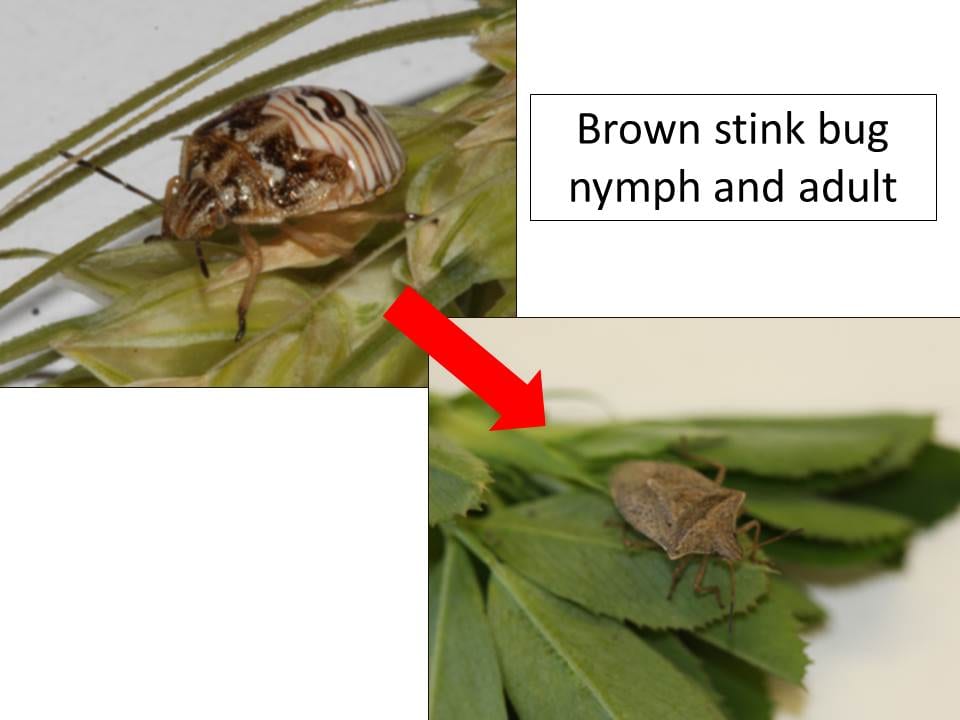–by Dr. Jeff Whitworth and Dr. Holly Davis
Probably the most common defoliator of soybeans throughout Kansas, for the past 6-7 years, has been the green cloverworm. This year has been no exception to that although there have not been the significant densities throughout most of the state as in 2015-2017. Most green cloverworm larvae are relatively mature or have pupated and the adult moths are, and will continue to be, emerging. In south central and north central KS, these moths are gaining attention as they congregate around lights at night and can be found hiding under boards, logs, rocks, etc. around soybean and/or alfalfa fields during the day.
One point of concern is relative to the next generation of larvae. The adults that are present now are from the 2nd generation. In KS, we can have 3 generations/year. So, current adults may oviposit in alfalfa and soybean fields and the larvae may feed for the next few weeks. However, both alfalfa and soybeans are far enough along that this late season feeding should not impact yields of either crop. Another concern is about these moths congregating in and around fields and what that means for next year. Green cloverworms do not overwinter in KS. So, wherever they migrate, or are blown, in next summer is where they will initiate infestations. Therefore, infestations next year have nothing to do with infestations this year.
Stink bugs are also causing some concern for soybean producers. The two most common stink bugs found in KS soybean fields are the brown and green stink bugs. Both lay eggs in groups or clusters and green stink bug nymphs are red, black, yellow, and green while brown stink bug nymphs are generally just yellow to brown.
After emerging from the eggs, nymphs stay in the same vicinity for the 1st couple of molts and then disperse. So, sampling in areas with clusters of nymphs will often overestimate the density. They all have sucking mouthparts but must have tender, succulent tissue to suck the juice from. Treatment should only be considered while beans are still filling in the pods. Stink bugs have a wide host range of plants including other crops, vegetables, and weeds. So, make sure they are feeding upon the developing seeds before making treatment decisions.
For more information on management of soybean pests, please refer to the 2018 Soybean Insect Management Guide: https://www.bookstore.ksre.ksu.edu/pubs/mf743.pdf



